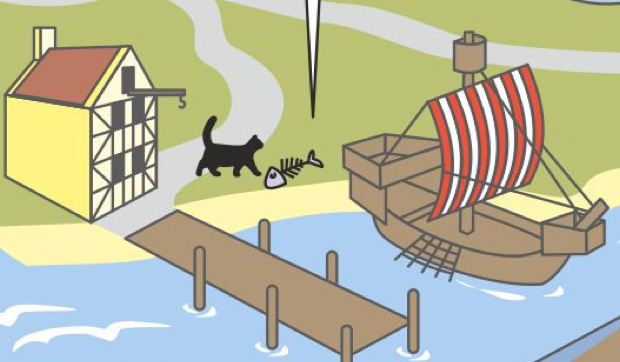Krajcarz, Magdalena / van Neer, Wim / Krajcarz, Maciej T. / Baca, Mateusz / de Cupere, Bea / Goffette, Quentin / Gręzak, Anna / Iwaszczuk, Urszula / Küchelmann, Hans Christian / Mulczyk, Anna / Ottoni, Claudio / Popović, Danijela / van de Vijver, Katrien / Wiejacki, Jan / Wilczyński, Jarosław / Makowiecki, Daniel / Bocherens, Hervé (2022): Stable isotopes unveil one millennium of domestic cat paleoecology in Europe. – Scientific Reports 12:12775
Abstract
The domestic cat is the world’s most popular pet and one of the most detrimental predators of terrestrial ecosystems. As opportunistic exploiters that maneuver among anthropogenic and natural landscapes, cats may have variable diets. Here, the stable isotope method was used on cat bone remains to reconstruct the diet and elucidate cat-human-environment relationships in past centuries. We determined trends in cat trophic paleoecology in northern Europe by exploiting population-scale isotopic patterns in cats from diverse geographic and archaeological contexts. Our dataset shows the high variability of isotopic signals in cats, with clear differences related to socio-economic and/or geomorphological contexts. This clearly indicates that the isotopic signature of a single cat specimen is not representative of the entire population, especially when considering complex urban, rural, and coastal locations. We provide a generalized guide to interpreting the isotopic ecology of cats, emphasizing that regional isotopic baselines have a major impact on the isotopic signal.
Download (pdf 5,6 MB)


Krajcarz, Magdalena / van Neer, Wim / Krajcarz, Maciej T. / Baca, Mateusz / de Cupere, Bea / Goffette, Quentin / Gręzak, Anna / Iwaszczuk, Urszula / Küchelmann, Hans Christian / Mulczyk, Anna / Ottoni, Claudio / Popović, Danijela / van de Vijver, Katrien / Wiejacki, Jan / Wilczyński, Jarosław / Makowiecki, Daniel / Bocherens, Hervé (2022): Stable isotopes unveil one millennium of domestic cat paleoecology in Europe. – Scientific Reports 12:12775
Abstract
The domestic cat is the world’s most popular pet and one of the most detrimental predators of terrestrial ecosystems. As opportunistic exploiters that maneuver among anthropogenic and natural landscapes, cats may have variable diets. Here, the stable isotope method was used on cat bone remains to reconstruct the diet and elucidate cat-human-environment relationships in past centuries. We determined trends in cat trophic paleoecology in northern Europe by exploiting population-scale isotopic patterns in cats from diverse geographic and archaeological contexts. Our dataset shows the high variability of isotopic signals in cats, with clear differences related to socio-economic and/or geomorphological contexts. This clearly indicates that the isotopic signature of a single cat specimen is not representative of the entire population, especially when considering complex urban, rural, and coastal locations. We provide a generalized guide to interpreting the isotopic ecology of cats, emphasizing that regional isotopic baselines have a major impact on the isotopic signal.
Download (pdf 5,6 MB)